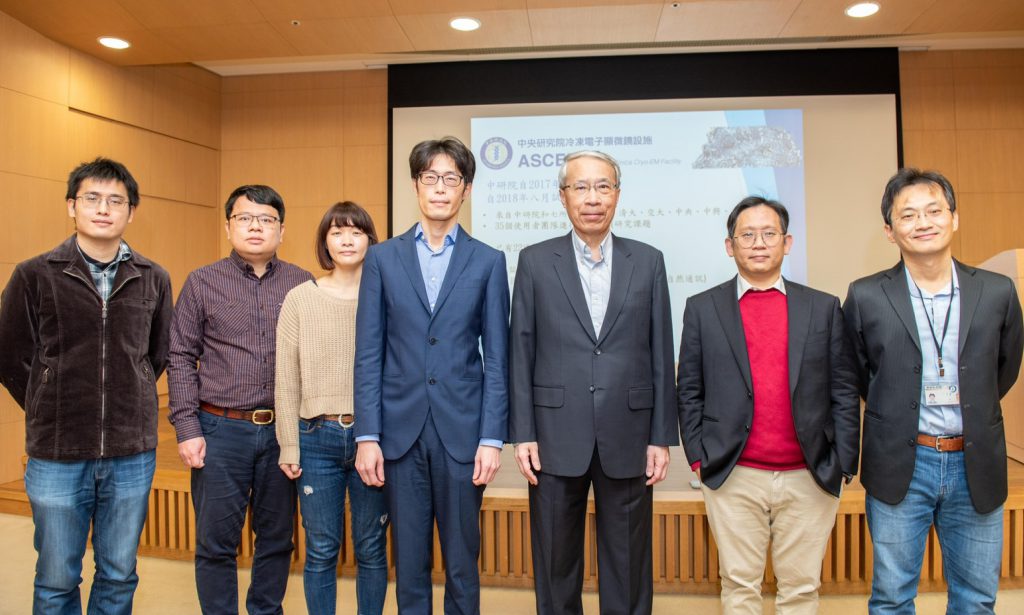
Genetic diversity is a key driving force of evolution. During homologous recombination, chromosomes from father and mother will pair together to exchange the genetic material leading to genetic diversity. In the process of chromosome pairing, the DMC1 protein is the key enzyme that catalyzes the DNA exchange reaction. What puzzles scientists is that although the chromosomal DNA sequences of the father and mother are similar, they are not completely the same. How DMC1 can tolerate the imperfection? What is the underlying mechanism? The research teams from National Taiwan University and Academia Sinica used a newly established cryo-electron microscopy facility and biochemical experiments to show that the DMC1 protein possesses a unique structure to accommodate imperfect pairing. The research results were published in the top-tier journal Nature Communications in January, 2021.
To explore the molecular mechanism of DMC1 harboring mismatch tolerability, the research team purified high-quality DMC1 protein and successfully solved the atomic resolution structure of the DMC1-DNA complex using cutting-edge cryo-electron microscopy. By “seeing” the molecular details of how DMC1 interacts with DNA, the research team hypothesizes that the larger space created by DMC1 can accommodate mismatch DNA pairing. The research team further tested this by making the space narrower via site-direct mutagenesis and observed this narrow space by cryoEM and MD simulation. They also demonstrate that size of the space is highly correlated with the tolerance of DNA mismatching by both biochemical and single-molecule experiments which beautifully support their hypothesis.
In biology, how enzymes can execute their functions “faithfully” is crucial to sustain the life. However, the “inaccurate” exchange of DNA sequences during meiosis is instead a necessary means for genetic diversity. The research results from the National Taiwan University and Academia Sinica teams provide a classic example of how enzymes control “fidelity” via their unique molecular structure. Moreover, the results of analyzing the structure of the DMC1-DNA complexes also provide possible molecular explanations for infertility caused by DMC1 mutations and diseases caused by uneven chromosome segregation.
The National Taiwan University team has been deeply involved in this research field for a long time. Through collaboration with the Academia Sinica team, not only they can address this biological subject more thoroughly, but also promote the international visibility of their research team. CryoEM is a very powerful tool as this research team could solve five protein-DNA complexes within one year. This is just one of ~20 atomic-resolution protein complex projects in the Academia Sinica cryoEM facility. One can expect more research breakthroughs contributed by Academia Sinica cryoEM facility, which was formed two years ago.
Dr. Shih-Chi Luo from the Institute of Biological Chemistry, Academia Sinica, and Dr. Hsin-Yi Yeh from the Institute of Biochemical Sciences, National Taiwan University, are the co-first authors of this paper. The research teams include Dr. Ming-Daw Tsai, Dr. Meng-Chiao Ho from the Institute of Biological Chemistry, Academia Sinica, Dr. Hung-Wen Li from the Department of Chemistry, National Taiwan University, and Dr. Peter Chi from the Institute of Biochemical Sciences, National Taiwan University. The research teams thank National Taiwan University, Ministry of Science and Technology, Academia Sinica, and Taiwan Protein Project for their support for research funding.
.Article: https://www.nature.com/articles/s41467-020-20258-1

